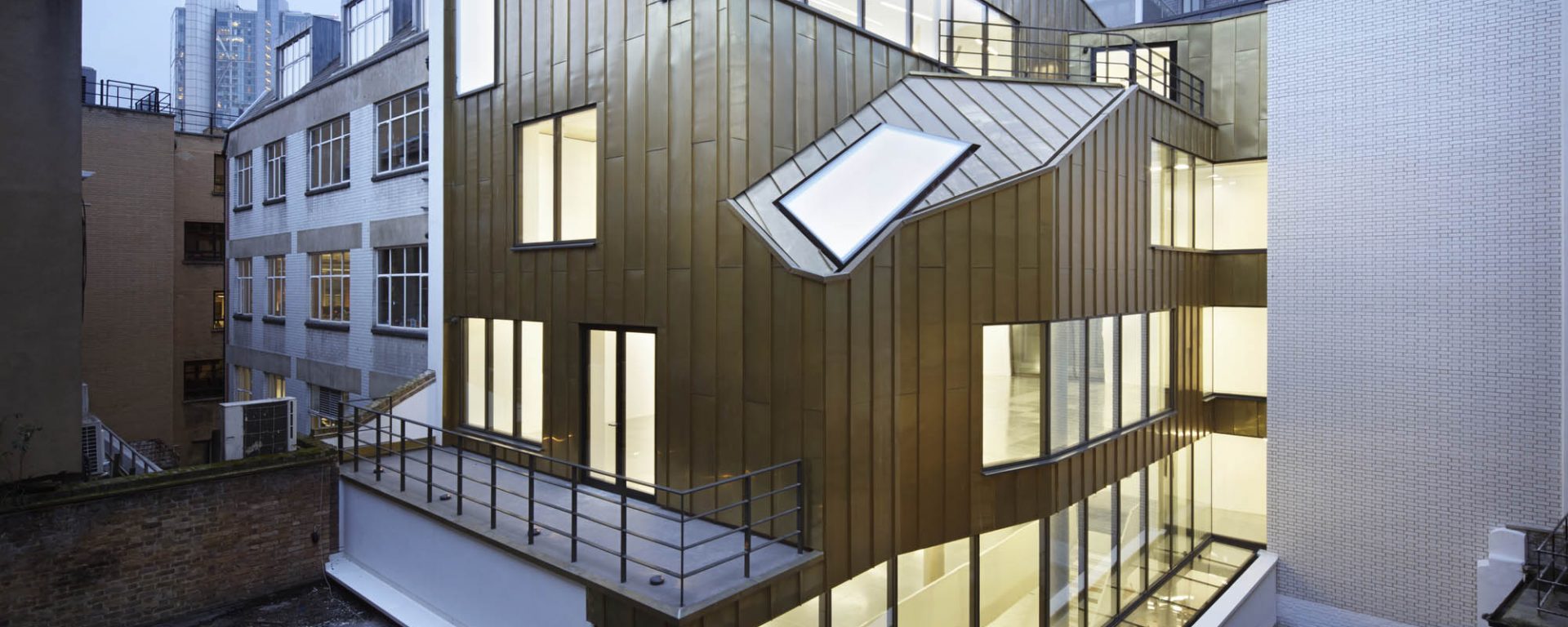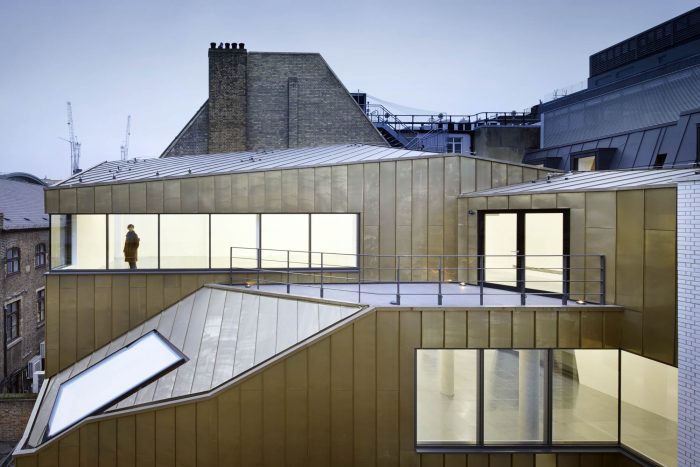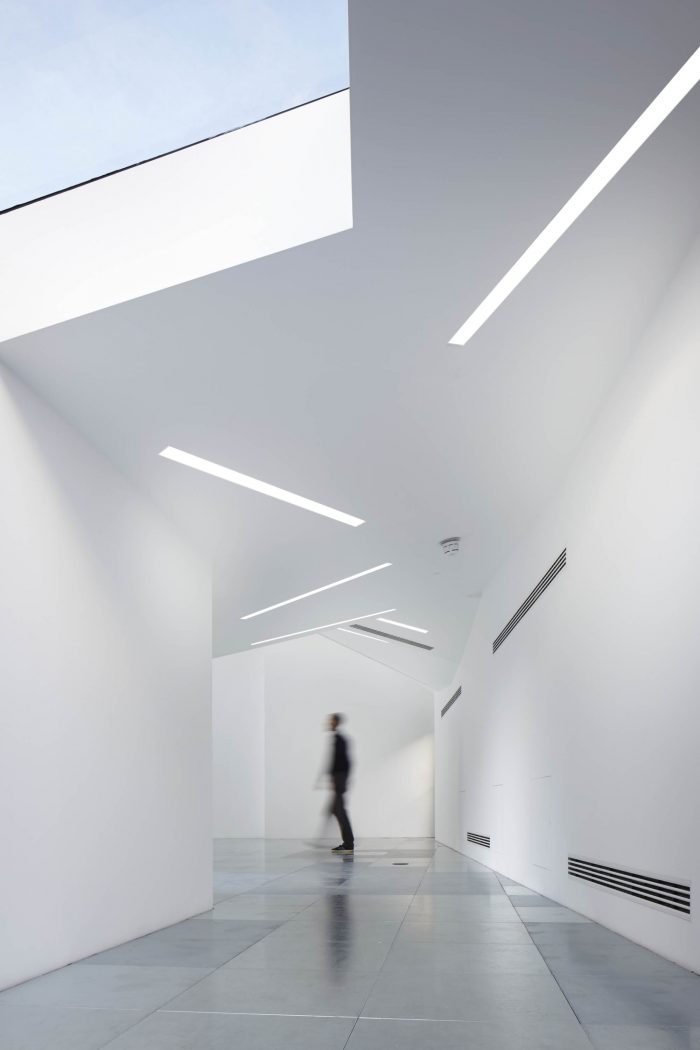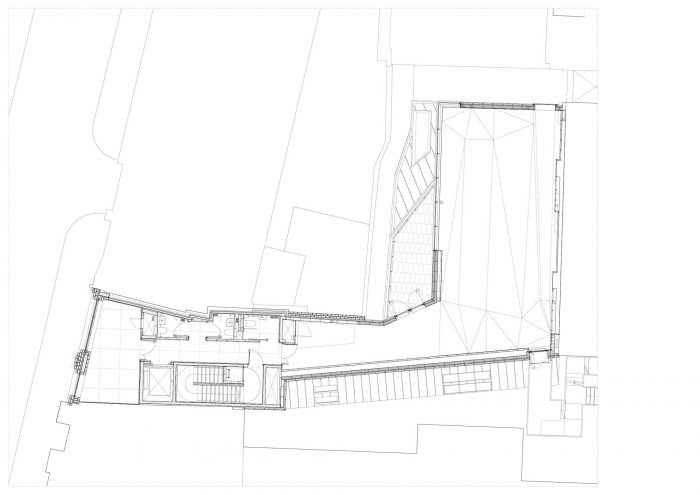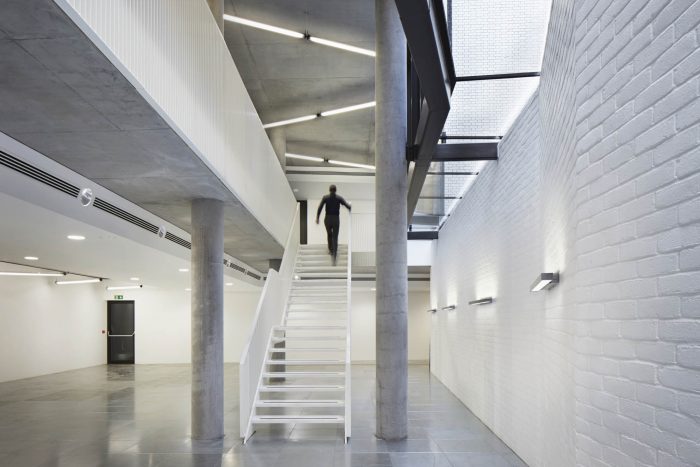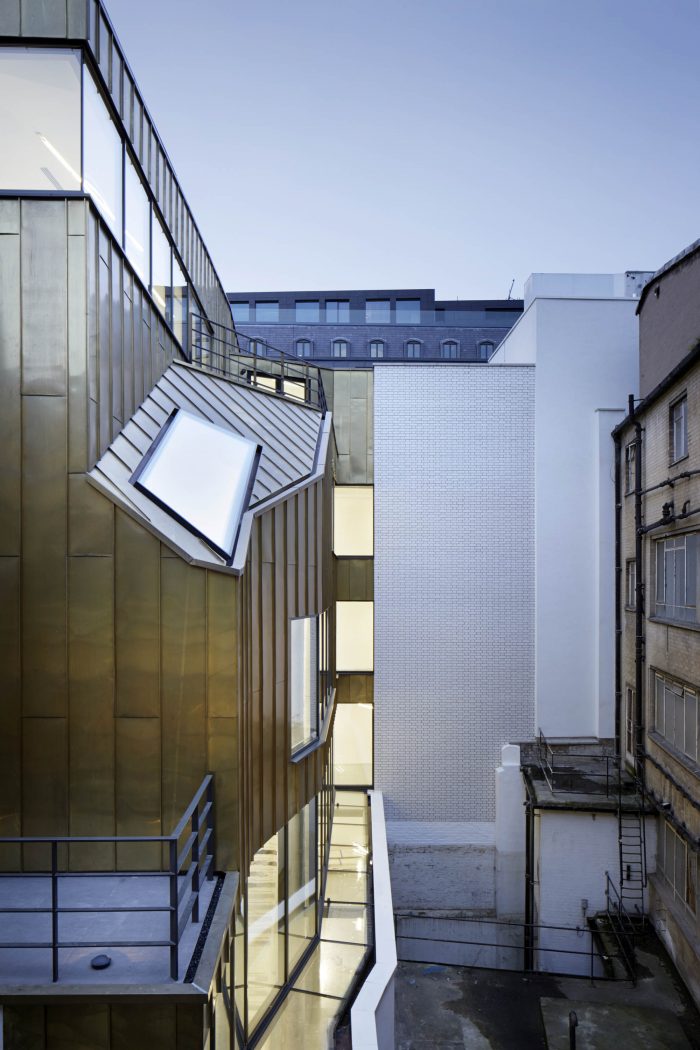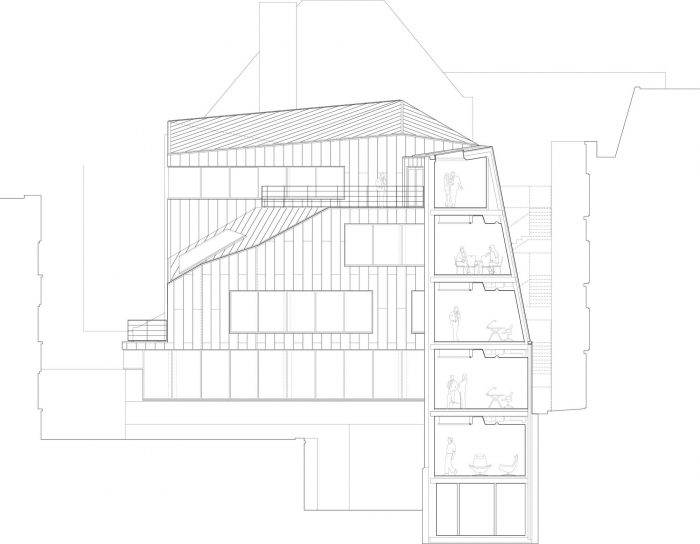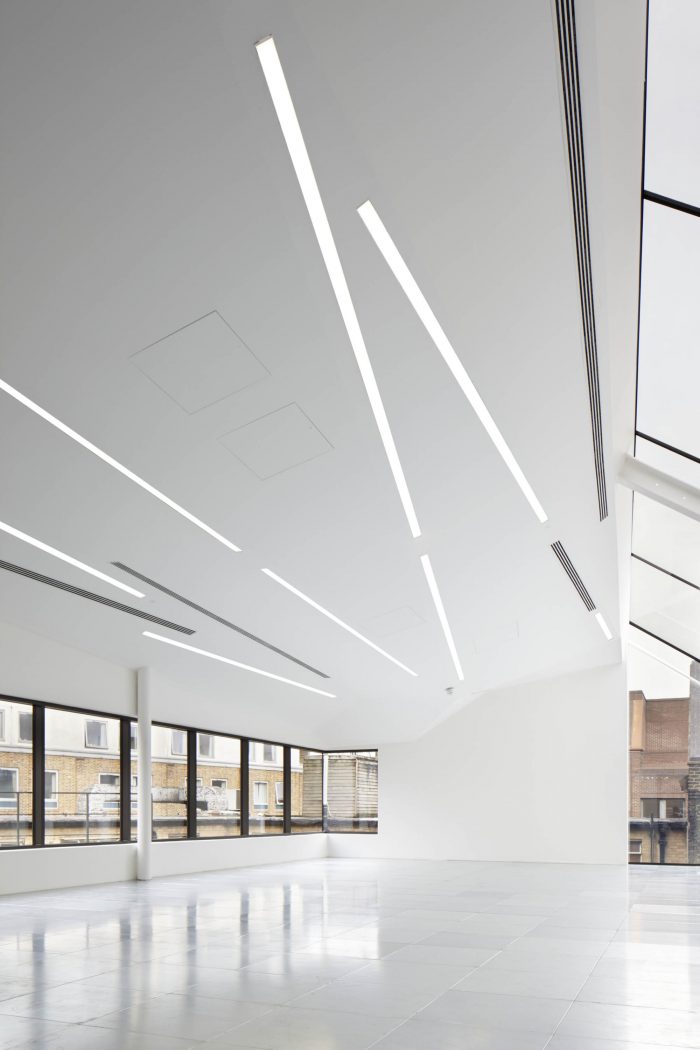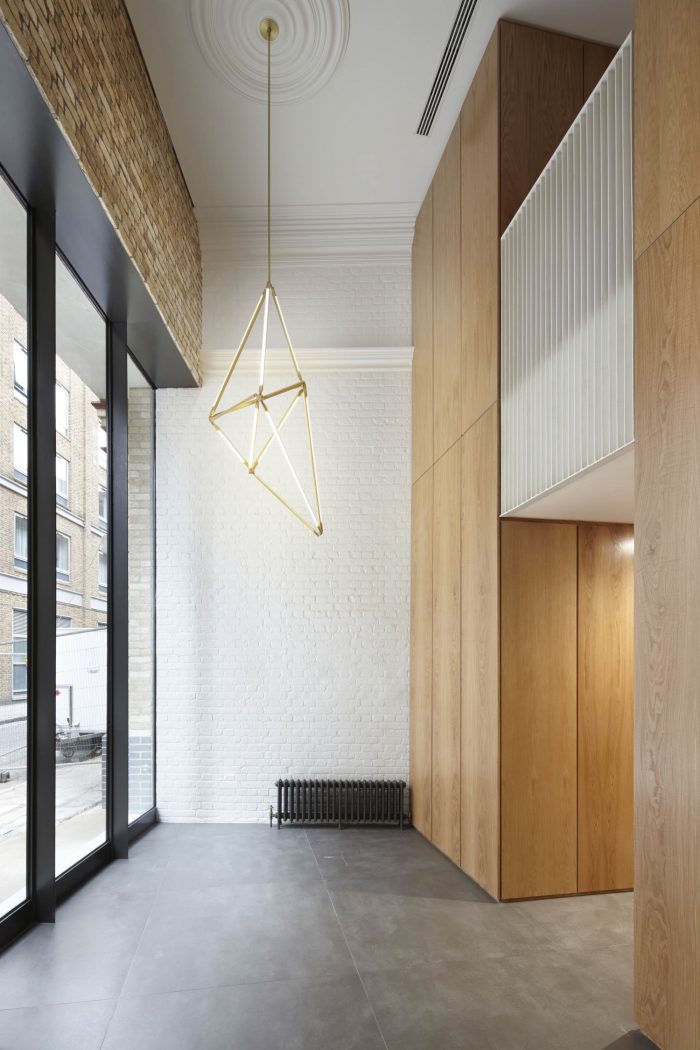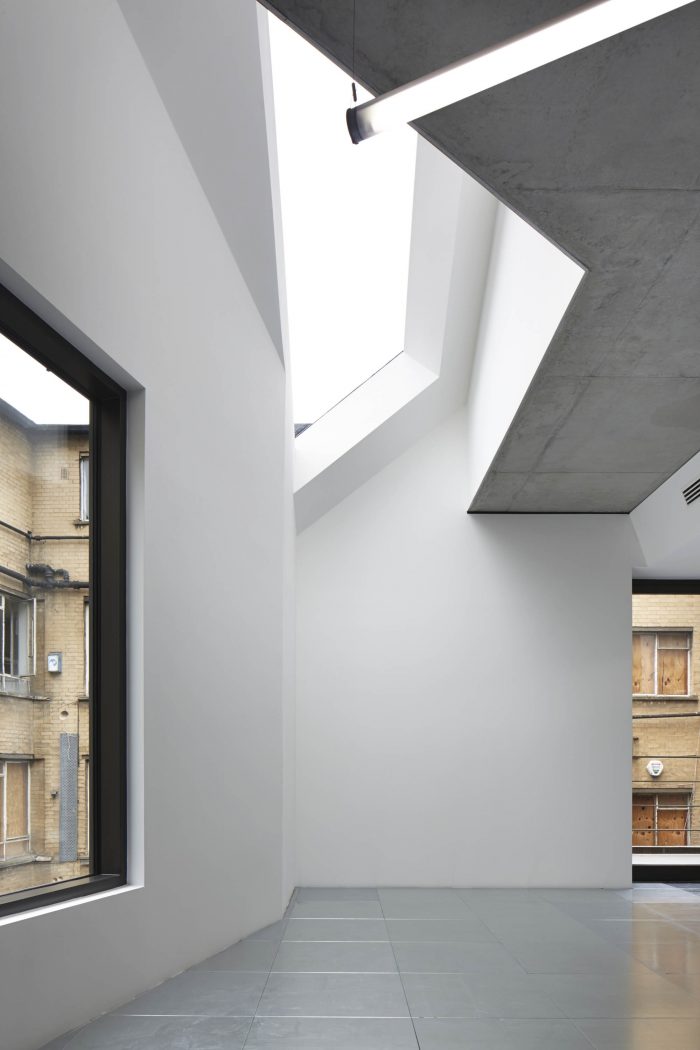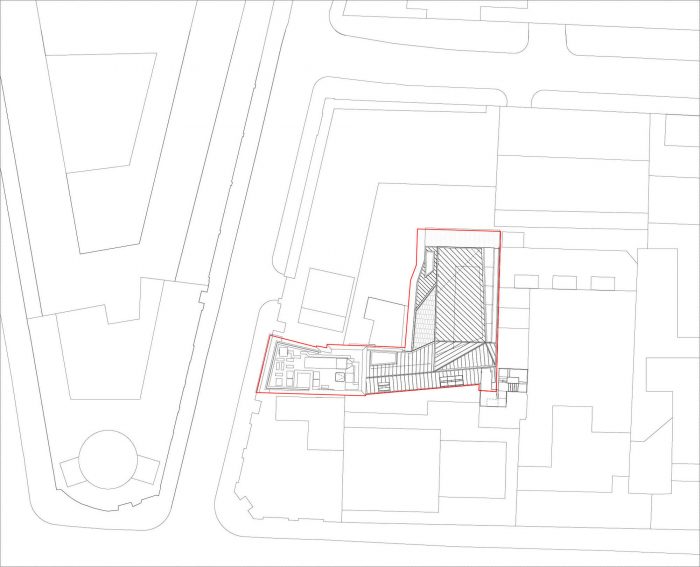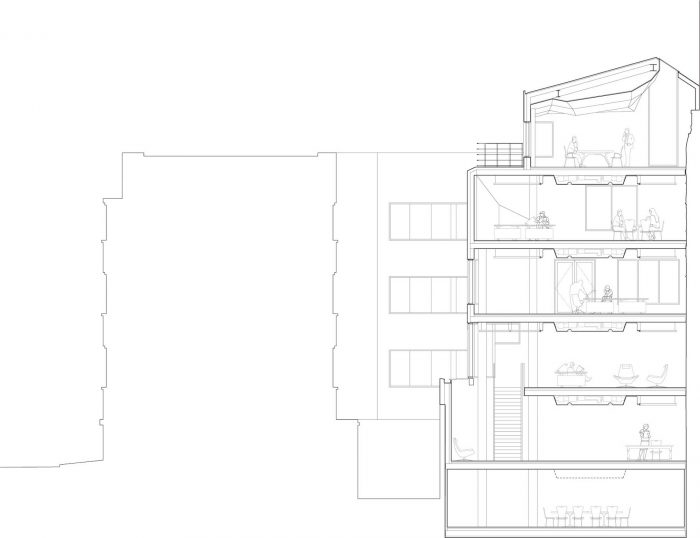2010年3月的一场大火之后,原来的建筑被烧毁的外壳成了Two Tabernacle Street所在地的全部。该建筑的所有者Durley投资公司希望将该地块重建为适合Shoreditch媒体和技术领域的办公室。Piercy&Company的对策是将这个具有挑战性的L形场地作为两个不同的元素:重新恢复维多利亚时期的狭长外墙,使之与泰伯纳克街相连;并在场地中央设置黄铜包覆的办公空间。维多利亚时代的幕府街立面的细节被仔细测量和编目。
Following a fire in March 2010, the burnt out shell of the original building was all that stood on the site of Two Tabernacle Street. The building’s owner, Durley Investment Corporation, sought to redevelop the site into offices suited to Shoreditch’s media and technology sector. Piercy&Company’s response was to approach the challenging L-shaped site as two distinct elements: the re-instatement of the narrow Victorian façade to Tabernacle Street; and brass- clad office spaces in the centre of the site. Details of the surviving features of the Victorian façade to Tabernacle Street were carefully measured and catalogued.
然后,对原始时期的立面进行了精心的解释,使之与周围的维多利亚时期的仓库特征和它所处的保护区域的特征保持一致,并与修改后的内部楼层保持一致。帝国砖砌的风化点和石墙、檐口和柱头相互支撑,创造了一个真实的维多利亚式砖石框架。开口用钢梁横跨,并填充了传统的双玻璃窗和平开窗。在街道上,一个3米×4米的无框玻璃窗为接待空间提供了一个现代感。
A refined interpretation of the original period elevation was then painstakingly constructed, to be in keeping with the surrounding Victorian warehouse character and that of the conservation area in which it sits and to align with the revised internal floor levels. Imperial brickwork with weathered pointing and stonework cills, cornices and column capitals bear on one another to create an authentic Victorian masonry frame. Openings are spanned with steel beams and infilled with traditionally detailed double glazed sash and casement windows. At street level a 3m x 4m frameless glazed picture window to the reception space provides a contemporary touch.
进入建筑后,诸如石膏檐口、图画栏杆、天花板上的玫瑰和接待处裸露的帝国砖块等时代元素成为极简主义特征的衬托,包括一盏棱角分明的吊灯(由纽约设计师Bec Brittain设计)、简单细致的橡木墙板和大尺寸的地板砖。慷慨的6米楼面到天花板的高度和一个小的一楼画廊为狭窄的街道立面提供了一个意想不到的体积。
On entering the building, period elements such as plaster cornices, picture rails, a ceiling rose and exposed imperial brickwork in the reception act as a foil to minimalist features, including an angular chandelier (by New York designer Bec Brittain), simply detailed oak wall panelling and large format floor tiles. A generous 6m floor to ceiling height and a small first floor gallery provide an unexpected volume given the narrow street elevation.
该建筑的大部分外观从街道上隐藏起来,只有邻近建筑的住户才能看到。由于临近现有的建筑,光照角度的权利在潜在的建筑体量中被雕刻出来。经过多次迭代,最终出现了巧妙的折叠平面,用黄铜Tecu包覆,并由玻璃板穿透的反应。黄铜包层的使用适合棱角分明的形式,同时也微妙地参考了该建筑的工业遗产。
Much of the exterior of the building is hidden from the street, only visible to occupiers of the neighbouring buildings. Due to the proximity of existing buildings, rights to light angles carved through the potential building volume. Following many iterations, the final response of cleverly folded planes clad in brass Tecu and punctured by panels of glazing emerged. The use of brass cladding suited the angular, faceted form whilst making subtle reference to the building’s industrial heritage.
在狭小的场地上,最大限度地增加自然光和六层办公室的视野是一个挑战,而边界和墙体问题又使其更加复杂。巨大的幕墙长度被设置得很低,而战略性地放置的屋顶灯则为各楼层提供了令人惊讶的日光。在地面上,自然光水平被中庭和屋顶灯提升,照亮了没有窗户的空间。整个办公空间的地板到天花板的高度已被最大化,超过3米,通过将服务设施置于中央隔板内,并将混凝土檐口暴露在两侧。
Maximising natural light in and views out of all the six office floors was challenging on the tight site, further complicated by boundary and party wall matters. Generous lengths of curtain walling were set low to the floor, while strategically placed rooflights flood the floorplates with surprising levels of daylight. At ground level natural light levels are elevated by an atrium and rooflight, illuminating the otherwise windowless space. Throughout the office spaces floor to ceiling heights have been maximised to over 3m by locating services within a central bulkhead and leaving the concrete soffit exposed either side.
叠加在双倍高度的接待处之上,建筑前部的三层楼是会议室,通过传统的大窗和平开窗可以看到泰伯纳克街的情况。橡木包层、裸露的砖头和混凝土檐口以及深色地砖构成了这些区域的材料色调,与白色墙壁和办公楼层的宽大玻璃形成了温和的对比。
Stacked above the double height reception, the upper three floors at the front of the building accommodate meeting rooms, which look out over Tabernacle Street through large traditional sash and casement windows. Oak cladding, exposed brickwork and concrete soffits and dark floor tiles make up the material palette of these areas, a gentle contrast to the white walls and expansive glazing of the office floors.
Architects: Piercy&Company
Area: 1446 m²
Year: 2015
Photographs: Jack Hobhouse
Manufacturers: TECU®, Propak Architectural
Acoustic Engineer: Sandy Brown Associates
Planning Consultant: DPP
Main Contractor: Kind & Company
Structural Engineer: Price & Myers
Engineer:GDM
Fire Engineer:Exova
Sustainability Consultant:Darren Evans
Project Manager, Cost Consultant:Jackson Coles
Cdm Coordinator:Jackson Cole
City:London
Country:United Kingdom

